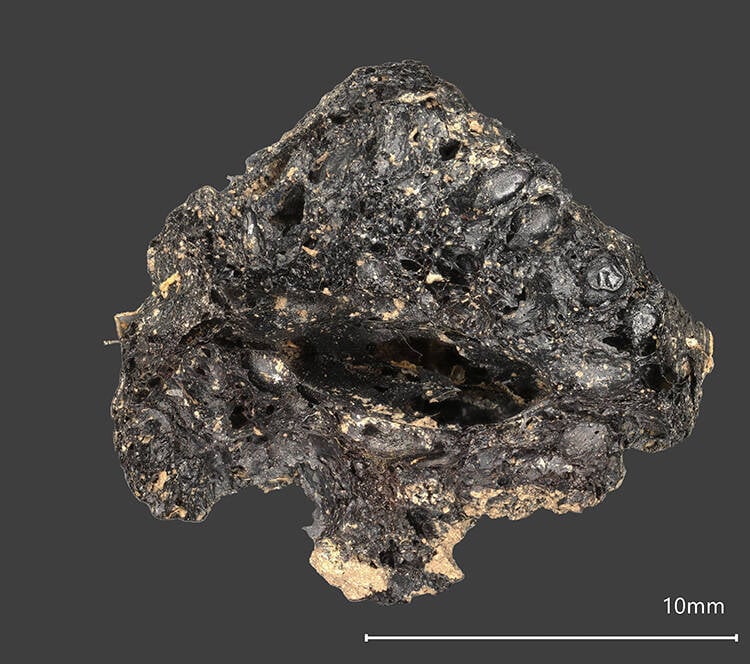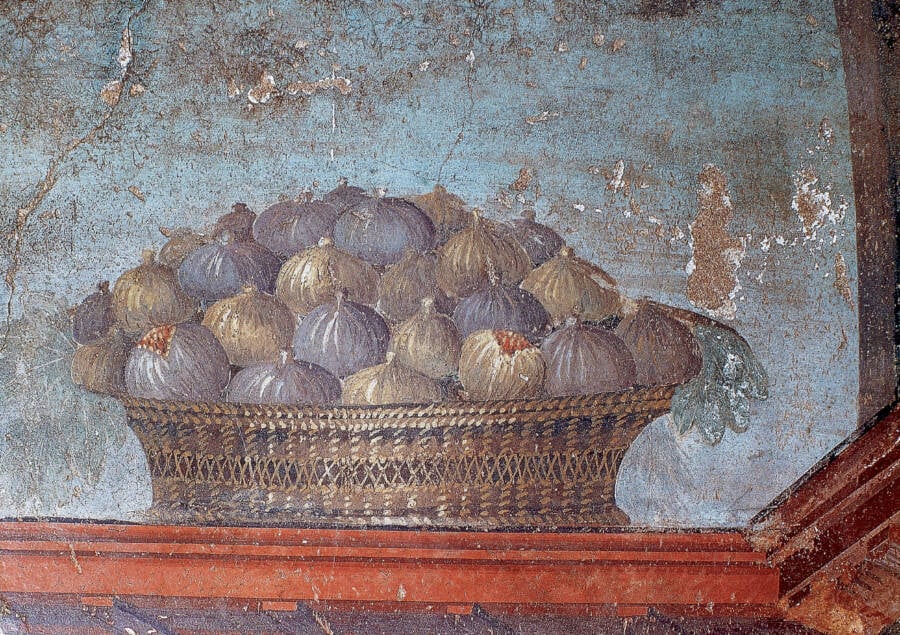Though the Roman Empire did not extend into Ireland, this charred fig provides a clear sign that Roman culture and trade did make their way to the Emerald Isle.

Historic EnglandThis 2,000-year-old charred fig provides evidence of ancient Roman influence in Ireland.
During excavations just north of Dublin, archaeologists came across a surprising artifact. Small, hard, and burnt, it didn’t look like anything of importance at first. But it actually turned out to be a 2,000-year-old fig — and compelling evidence of how Roman culture made its way into Ireland in ancient times.
Though the ancient Romans never actually conquered Ireland, this fig helps demonstrate just how pervasive Roman culture once was.
The 2,000-Year-Old Roman Fig Found In Drumanagh, Ireland
According to a statement from University College Dublin (UCD), the 2,000-year-old “large, charred fragment of a fig” was found at the headlands in Drumanagh, where a trading post with the Roman Empire was once located.
“Straight away, it seemed unusual,” Associate Professor Meriel McClatchie, Director of the UCD Ancient Foods research group at UCD School of Archaeology, told All That’s Interesting in an email. “It was a large charred mass, so it was carefully packed by the excavation team, labeled as a possible apple fragment, and sent to me for analysis.”
McClatchie was immediately “intrigued” by the object, as it’s extraordinarily rare to find fragments of ancient food. After placing it under a microscope, she determined that the surface pattern of the fruit and its seed size wasn’t right for an apple — or for other fruits like berries.
She suspected that it was a fig. To be sure, McClatchie shared photos of the specimen to colleagues across Europe, and eventually brought it to Historic England. There, experts examined it under a high-powered microscope — and agreed with her analysis.

Historic EnglandA closeup of the fig, which is the oldest exotic fruit ever found in Ireland.
The fig, which survived all this time because it was burnt, is an astounding discovery. It’s the oldest example of an exotic fruit ever found in Ireland — in fact, only seeds have been found in the past — and a symbol of Ireland’s relationship with the ancient Romans.
“Figs have such a strong association with foodways of the Roman Empire, so the discovery of a fig at Drumanagh fitted well with the bigger picture from this site,” McClatchie explained.
Before it fell in 476 C.E., the Roman Empire stretched across much of Europe as well as parts of western Asia and North Africa. But though the Romans never conquered Ireland, elements of their culture made it across the Irish Sea.
How The Fig Made Its Way From Southern Europe To Ireland 2,000 Years Ago
As the Roman Empire expanded and its roads snaked across Europe, elements of its culture spread far and wide. In Drumanagh, where the trading post was once located, a variety of goods would have made their way to Irish shores. Favorites of Roman cuisine like almonds, grapes, dates, and figs were introduced to people living in Ireland via these trading routes.

PRISMA ARCHIVO/Alamy Stock PhotoAn ancient Roman fresco depicting figs that was found in the doomed city of Pompeii.
“The fig tells us that not only were objects making their way to Ireland from the Roman Empire, people also brought food,” McClatchie told All That’s Interesting. “Figs could easily be transported in a dried state, and they were symbolic because of their strong association with Roman culinary culture.”
Christine Baker, the Heritage Officer at Fingal County Council who led the excavation, additionally told All That’s Interesting: “Fig consumption on Drumanagh is in the context of evidence for olive oil that is being imported from the Roman province of Baetica in southern Spain… All of which indicates a wish to maintain the tastes, lifestyle and identity of people from the Roman Empire in a land where such a diet was exceptional.”
But since historians didn’t know — until now — that figs made their way all the way to Ireland, McClatchie added that it’s “thrilling to imagine someone enjoying such an exotic food here in Ireland so long ago.”

Christine Baker, Heritage Officer/Archaeologist at Fingal County CouncilArchaeologists in Drumanagh, where the 2,000-year-old fig and other evidence of Roman culture in Ireland was unearthed.
Archaeologists have been examining the site at Drumanagh for quite some time now, and Baker told All That’s Interesting that they’ve also found “storage pits and burials dating from the first to third centuries C.E.” over the past four seasons of excavations. From other artifacts recovered at the site, archaeologists “know that [ancient people] were tending and processing animals for food and hides; that they are spinning wool and weaving and that they are manufacturing and modifying glass beads.”
Archaeologists have also found “significant quantities” of spelt wheat at the site. According to the university statement, this cereal was rare in Ireland, but was a dietary staple in Roman Britain.
As such, the excavations have helped paint a picture of what life was like for people living in Ireland during the age of the Roman Empire. Though removed from the empire itself, they still felt the impact of its culture.
“Our excavations have revealed more of the story of those living and working at Drumanagh,” Baker stated. “We now know there was an importation, not just of goods but of lifestyle. By these windswept cliffs people were consuming spelt bread, olive oil and figs, drinking from glass vessels and fine ceramic cups while wearing brooches and glass beads.”
After reading about the 2,000-year-old fig found in Ireland, discover the stories of some of the most fascinating mythological creatures from Irish Celtic lore. Then, learn about the Book of Kells, the illuminated Gospels kept in Dublin’s Trinity College Library.





